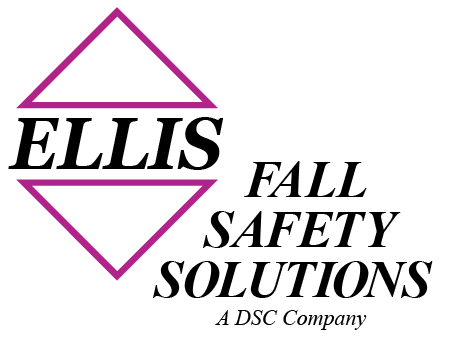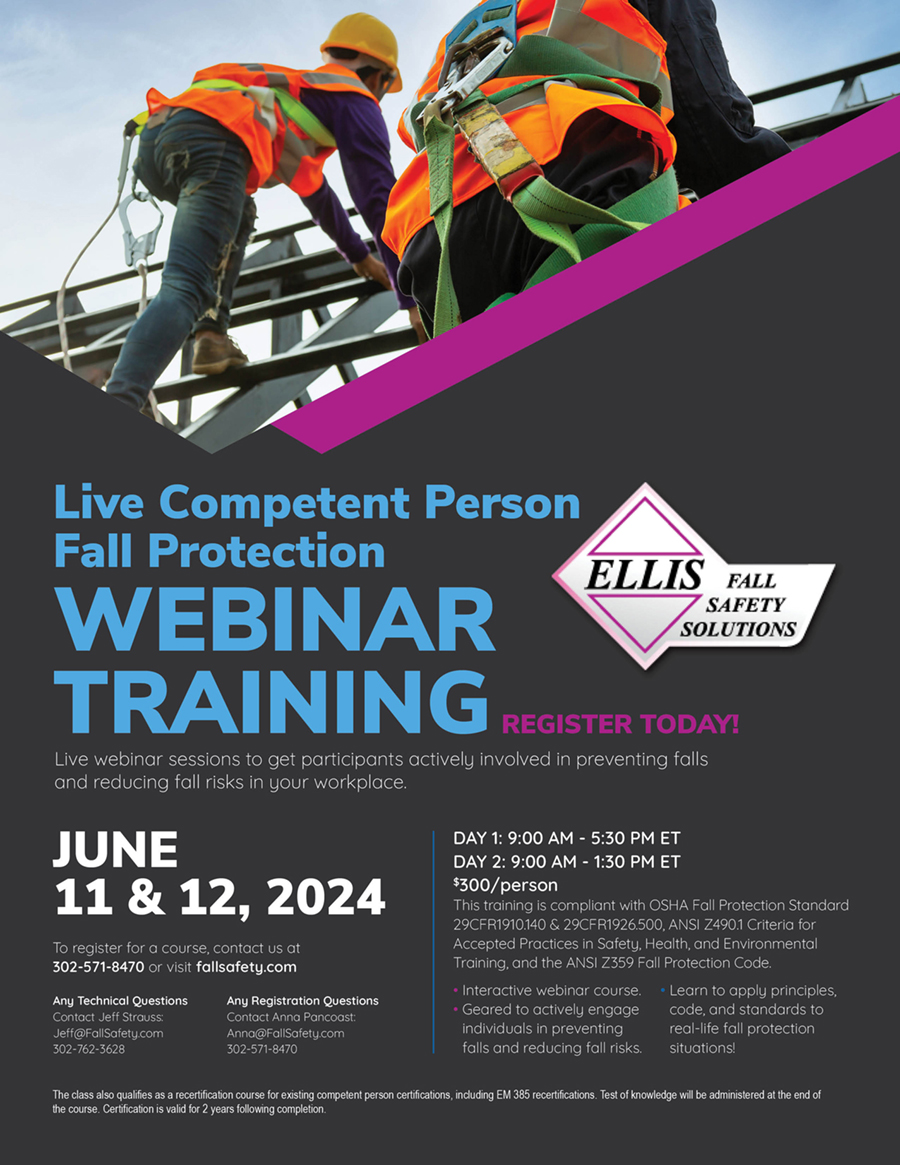Tip of the Week No. 133 – 10/30/06 – Debris Nets
Debris nets should project sufficiently beyond the perimeter of a building to catch falling construction materials or packaging from a vien height.
A singel perimeter net system projecting 8 feet beyond the exterior edge at the fourth-floor level, for example, may not be adequate to catch objects dropping from the twentieth floor.
See “Introduction to Fall Protection, 3rd Edition” page 123.
This book is an invaluable resource for every safety manager’s library. Click here to find out about ordering a copy. Order online now.
Tip of the Week No. 132 – 10/23/06 – Safety Nets
Safety nets are an option if fall arrest equipment has not been shown to be practical.
OSHA calls for nets where the potential fall distance exceeds two stories, or 25 feet, in multitiered building construction.
See “Introduction to Fall Protection, 3rd Edition” page 25 and more in Chapter 5.
This book is an invaluable resource for every safety manager’s library. Click here to find out about ordering a copy. Order online now.
Tip of the Week No. 55 A – 01/17/05 – Netting as guardrails
OSHA’s Subpart M requires guardrail and toeboard systems on all open-sided floors, platforms, runways, wall openings, holes, roofs, excavations and machinery areas.
Additionally, when equipment or materials are piled higher than the top edge of a standard toeboard, debris netting must be installed from the top rail to the deck level to provide overhead protection for employees working below.
When properly installed from a required top rail (cable) and secured directly to deck level, some nets satisfy OSHA requirements for midrail and toeboard protection, as well as overhead protection as defined above.
See “Introduction to Fall Protection, 3rd Edition” page 124.
How about ordering a copy for yourself? Order online now.
Tip of the Week No. 58 A – 02/07/05 – Nets.
The installation of nets requires careful planning. Aerial lifts, manbaskets or personal fall arrest equipment is needed to protect workers exposed to a fall hazard while installing the nets or when moving them.
Net and/or horizontal lifelines can provide many solutions to fall hazards if they are planned, installed and used.
It should be noted that netting or tarpaulins (or their equivalent), when used for wind or weather protection on scaffolds, require calculation to determine their adequate stability against turning over or collapse.
See “Introduction to Fall Protection, 3rd Edition” page 124.
How about ordering a copy of for yourself? Order online now.
Tip of the Week No. 86 A – 09/26/05 – Debris Nets
Debris nets are designed to catch falling debris, such as tools, foreign objects, falling concrete, and other construction debris, and to protect workers and pedestrians below.
The strength and size of the mesh must be sufficient to sustain the impact, catch the size, and sustain the weight of the objects that are likely to fall.
Typical net sizes range from 1/4 inch to 3/4 inch mesh.
See “Introduction to Fall Protection, 3rd Edition” page 123.
How about ordering a copy of for yourself? Order online now.
Tip of the Week No. 45 – 11/01/04 – Nets.
Interior nets refer to personnel nets used on the interior of a structure.
For example, where stairs are not ready for use, nets can provide temporary protection, as an alternative to temporary guardrails.
See “Introduction to Fall Protection, 3rd Edition” page 123.
How about ordering a copy for yourself? Order online now.
Tip of the Week No. 30 – 07/05/04 – Nets
Safety net engineering requires that the net be treated like a horizontal lifeline. A combination of calculating (or reference to testing data) dynamic sag limitations (to avoid hitting an obstruction or the ground) and attaching suspension cables to the structure can provide the design needed to protect users.
See “Introduction to Fall Protection, 3rd Edition” page 125.
How about ordering a copy for yourself? Order online now.
Tip of the Week No. 6 – 01/05/04. Nets.
Passive nets for fall arrest, once installed, provide protection to workers without any active or conscious effort on their part. The advantage of nets is that individual worker training in not required. Once installed, nets are always in place and ready for use for the designated fall hazard.
See “Introduction to Fall Protection, 3rd Edition” page 122.
How about ordering a copy of for yourself? Order online now.
Tip of the Week No. 266 – 12/21/09 – Nets
For decades nets have been used for fall hazards encountered with work in pits, such as underside work on buses, tramcars, or autos. The problem with this practice is that users and supervisors have to be willing to reposition nets that have been pulled out of the way to allow work access. The use of lighter-weight nets has helped to curtail this problem.
Also, spans of cable are dependent on the depth of the pit. As long as a span as possible should be used to encourage workers to slide the net section, rather than unhooking from one side (which makes rehooking more of a burden).
Some pits cannot operate with nets because of moving coil cars (such as those in aluminum plants), so railing systems with warning signs are the choice for protection.
See “Introduction to Fall Protection, 3rd Edition” page 125.
This book is an invaluable resource for every safety manager’s library. Click here to find out about ordering a copy. Order online now.
Tip of the Week No. 279 – 04/12/10 – Safety Nets
Safety-net engineering requires that the net be treated like a horizontal lifeline.
A combination of calculating (or reference to testing data) dynamic sag limitations (to avoid hitting an obstruction of the ground) and attaching suspension cables to the structure can provide the design needed to protect users.
See “Introduction to Fall Protection, 3rd Edition” page 125.
This book is an invaluable resource for every safety manager’s library. Click here to find out about ordering a copy. Order online now.
Please select a category from the list below
- Aerial Lifts/Platforms
- Anchorage Points
- Calculations
- Construction Contracts
- Consulting
- Cranes
- Descent Devices
- Ellis Articles
- Ellis Presentations
- Equipment Maintenance
- Ergonomics/Human Factors
- Fall/Safety Statistics
- FP systems, programs
- Guardrails
- Harnesses, FP Equipment, HLL, SRL
- Hazards
- Holes/Pits
- Ladders
- Lanyards/Twin Tail Lanyards
- Misc.
- Nets
- New
- NIOSH
- OSHA News/Citations
- PFAS
- Rescue
- Roofs
- Ropes
- Safety Cases
- Safety Organizations
- Scaffolds
- Skylights
- Stairs
- Standard/Regulations
- Steel Erection
- Tanks
- Towers
- Training
- Tree Stands
- Trucks
- Tying Off
- Veterans of Safety
- Window Cleaners
- Workers Comp

